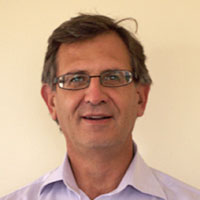International comparative studies put Australia near the top of OECD nations for health care systems. The 2017 Commonwealth Fund study ranked Australia second after the UK, using five parameters. We led the other countries on administrative efficiency and health care outcomes, and ranked second on “care process”.
Health has been the fastest growing sector in the economy for over 15 years, accounting for 10% of GDP and 13% of the total workforce. Despite this, government health care expenditure is only slightly above the OECD average.
The success - and perhaps relative failure - of the Australian performance has been attributed to its single-payer insurance program, Medicare, coupled with an alternative private system. Medicare has been successful at capping doctors’ fees through freezes in the last five years and partial indexation prior to that. However, as doctors break out of the Medicare straightjacket lower socio-economic groups suffer and go without medical care.
This explains Australia’s relatively poor results in the Commonwealth Fund study on access and equity.
The driver for rising health care costs is well known. The ageing population of baby boomers is now sixty or older, the time when more serious medical problems emerge. These problems are frequently chronic and not amenable to cure, although they can be managed. New technologies in diagnostics, therapeutics, genomics and robotics are certainly sophisticated - and expensive.
As a result patients are living longer with their illnesses and are being managed by teams of specialists and subspecialists. As the saying goes, “Cancer is the new chronic disease”… GPs are spending an increasing amount of their time in co-ordinating their patients’ care.
Patients are also more demanding of the health care system. Information technology has revolutionised many aspects of people's lives. Education and business have embraced innovations which provide a better, more convenient and cheaper option to the old bricks- and-mortar offerings. Patients are understandably frustrated that medicine has lagged so far behind.
They also seeking more information about their conditions and want to be more involved in their medical management. Chronic disease management plans, same-day action plans and advanced health care directives are most successful when developed with active patient involvement.
The days of “doctor as God” have gone. Younger, healthier patients will often self-manage with success. For them the first port of call is Dr Google. If she cannot help there is always Dr Facebook. If you want a third opinion… see your GP.
Helping the patient navigate around the health system, particularly at the primary care/ hospital interface remains a challenge. This is partially due to historical reasons, with responsibility and funding for primary care coming from the Federal government, and from the States for hospitals.
A political solution would be best but remains no closer now than 30 years ago.
There is some cause for hope in improving data exchange. The recent Winter Strategy saw much better communication between the two groups for a select group of at-risk patients.
In this issue Peter Silberberg gives his first impressions of the Orion Shared Care Tool. This provides a common platform for patients shared between the LHD and general practice. Its use in community mental health, which has been a difficult area in the past, is a great advance.
The safety and privacy concerns around the My Health Record have had a lot of public exposure since May. Despite, or perhaps because of, the publicity many baby boomers want “in”. “Informed patients” assess the cost/benefit ratio, and for the elderly, at least, it stacks up.
The convoluted debate on cannabis continues and local psychiatrist, Harry Freeman, and physician, Bob Lodge, give their perspectives on an issue that encompasses the clinical fraternity, politicians, police and more. Dr Lodge’s article and his recent presentation on the same subject at the Nordocs conference can be found on the GPSpeak website.
In words often simplified to “travel broadens the mind”, Mark Twain wrote that, “Travel is fatal to prejudice, bigotry, and narrow-mindedness, and many of our people need it sorely on these accounts”. In this issue Bob Lodge travels to Israel in his ”Journey to the Promised Land” while I reflect on China, a land of great promise that is much in the news. There is no doubt that Chinese enterprise and national socialism are rapidly forging a new society.
Both the NSW and Federal governments will go to the polls within the next six months. While election issues can be unpredictable, it is unlikely that health will be a major issue in either election. The ‘Mediscare’ campaign of 2016 nearly cost the government its second term. While the Coalition is behind in the polls the economy is stronger now and they will campaign on their economic record to turn the tide.
On page 5 the Chair of NRGPN, Dr Nathan Kesteven, questions the relevance of our organisation in the age of commissioning. He advocates for a new organisation of North Coast doctors that will be better suited to the new environment and help bridge the primary care/hospital sector divide. A preliminary meeting to discuss the issue is scheduled for 13 December at the Goonellabah Tavern.
Our financial year 2018 ends in December. I would like to take this opportunity to thank our major sponsors, Accountants Thomas Noble and Russell, North Coast Vascular Group and Gold Coast Private Hospital, and our minor sponsors Genesis Cancer Care, Dr Harald Puhalla, North Coast Radiology, Sullivan Nicolaides and Partners, Southside Pharmacy, University of Wollongong and St Vincent’s Hospital for their support in bringing you GPSpeak, the North Coast’s only independent medical magazine.
















